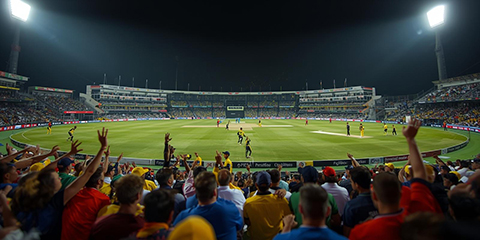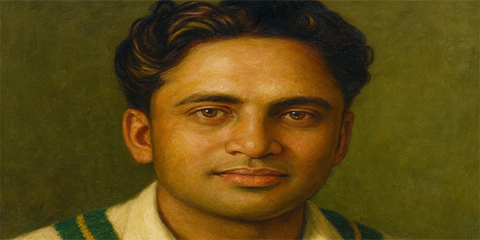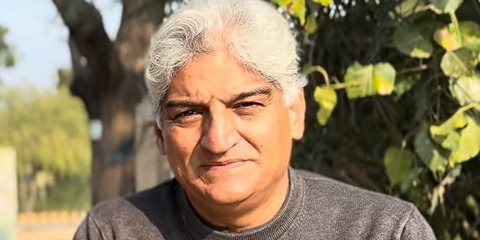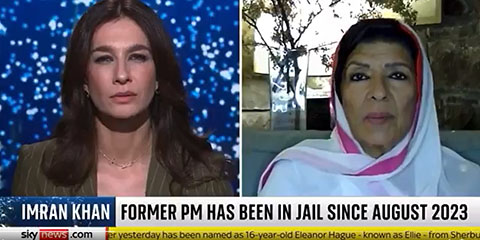The fall of a cricket God: Virat Kohli's battle with form and legacy
JournalismPakistan.com | Published last year | Dr. Nauman Niaz (TI)
Join our WhatsApp channel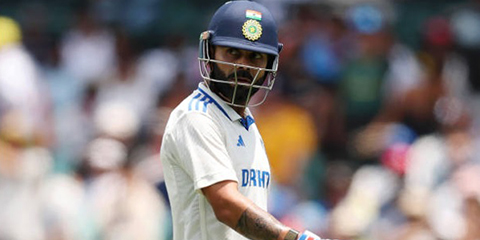
In the ruthless world of international cricket, where reputations are sculpted and legacies persist, Virat Kohli stands as an indomitable cricketer, a colossus whose scintillating career has been an elucidation of mastery, delineation of resilience, and the sheer force of will.
Yet, as the ongoing Border-Gavaskar Trophy gets towards its culmination, a series of ignominious dismissals, seven times out of the nine innings he had played, caught either in the slips or behind the stumps, casts skepticism over the resplendence of his career.
Could this be the moment where Kohli’s near-mythic trajectory begins its descent or has he already declined, and the greatest show on earth is about to end? Or is this but a fleeting aberration, a test of the same mettle that has seen him excel to unparalleled heights?
In Australia, a place where the sun blazes mercilessly and fast bowlers thrive, the enigma of Virat Kohli’s decline has unfurled with the tragic inevitability of a hero meeting his fatal flaw. Save for a defiant century at Perth in the first Test, his presence has been one of the bewildering contrasts and unresolved paradoxes. How could a player, whose artistry once daubed the cricketing world in strokes of genius, falter so visibly in taming his fundamentals?
A discerning observer need only examine the metamorphosis in his technique to understand the roots of his struggles. From the anchored, grounded bat of 2015 to the exaggerated high backlift of late, Kohli’s stance has lost its equilibrium. His static balance, once an attribute of his mastery, now betrays him; a push forward renders his shoulder flexed and rotated, his vision blinded to the dangers lurking outside the off-stump. Each ball appears to compel him into unnecessary motion, as though he were no longer the artisan but the canvas, shaped by forces beyond his control. One is left to wonder, are these not just technical issues but also the manifestation of a deeper mental encumbrance? Is the burden of his legacy, the insurmountable expectations, and the silent pressure of an entire nation corroding his very essence?
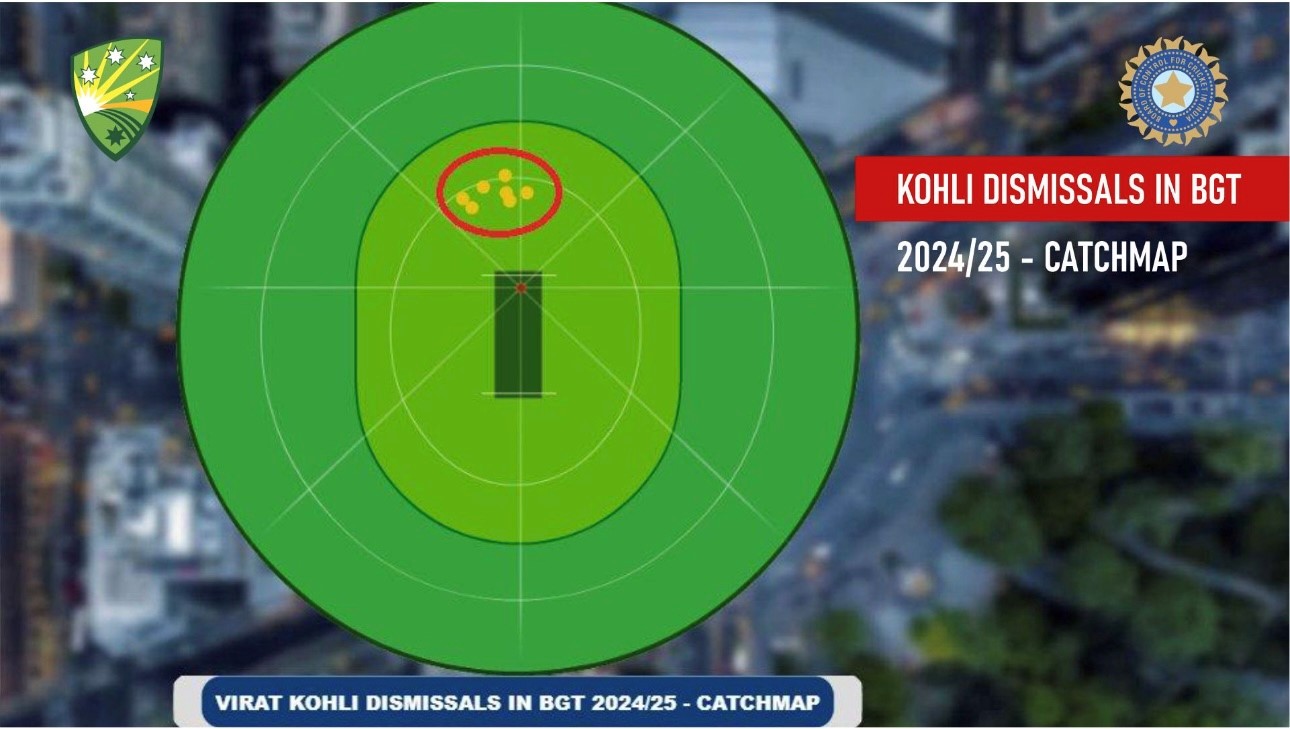
In Australia, not really a place of his discontent, in this series, his numbers sketch a grim depiction. At Perth, he managed 100 not out but was dismissed for 5 in the first innings. Adelaide brought only 7 and 11. At Brisbane he only had 3 in his sole outing, while Melbourne brought him 36 and 5, and Sydney concluded with an ignominious 17 and 6. Five times, the guile of Scott Boland, a masterful practitioner of pace, has unseated him. No longer the indomitable figure of bowlers’ nightmares, Kohli has been systematically unraveled, his vulnerabilities exposed. Against the fast bowlers, thrice he chased deliveries wide outside the sixth stump; four times, he fell to deliveries closer to the fourth stump, unable to leave the ball alone, his tardy footwork driving him inexorably towards edges and fates sealed in the slips.
Yet, to focus solely on these moments is to lose sight of the grander tragedy. Kohli is not just another batsman. He is, or perhaps was, the harbinger of India’s cricketing dominance, the architect of its triumphs, and the bearer of the crown that marked him as the world’s best. His records once seemed untouchable: 50 centuries in One Day Internationals, 30 in Tests, and an average exceeding 50 across all formats. But even kings are not immune to the vicissitudes of life.
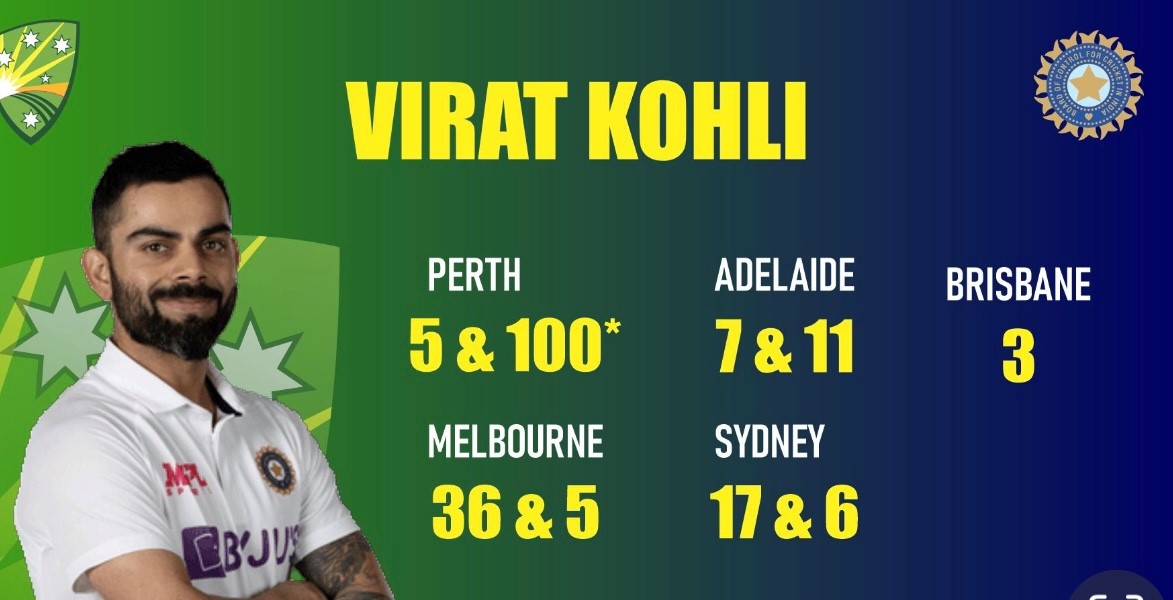
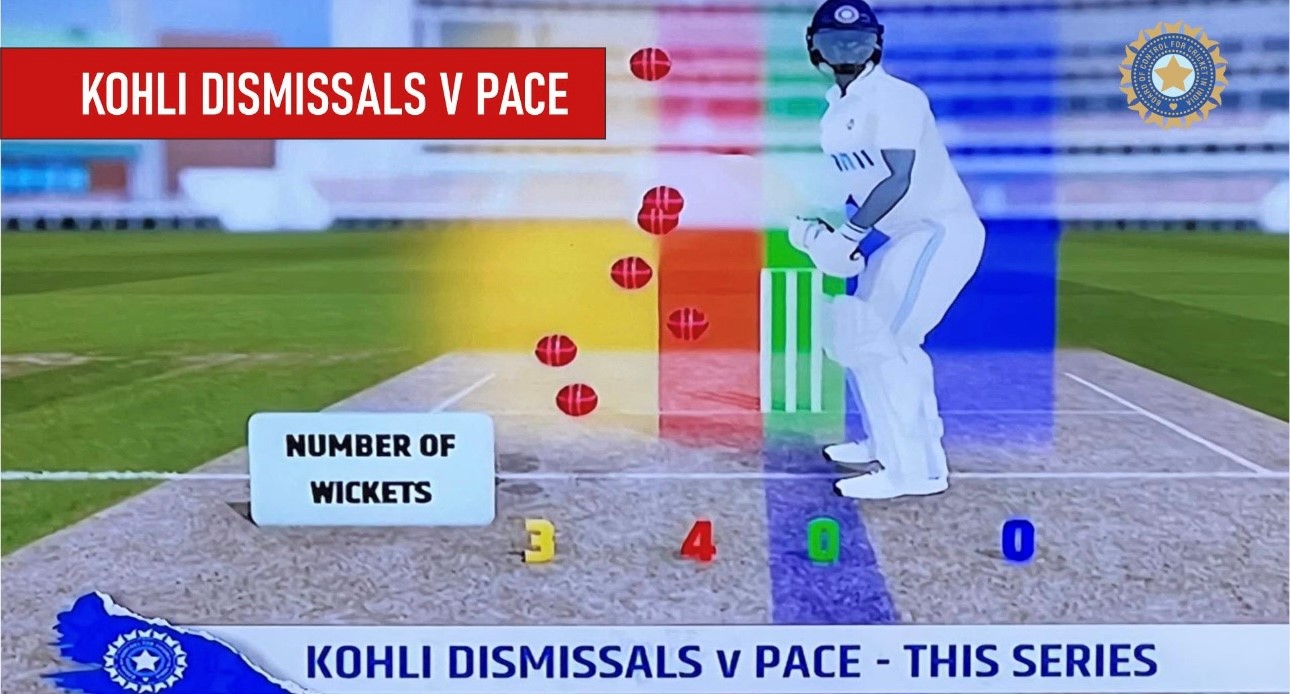
Since 2021, the downward spiral has been stark. That year, he accumulated 536 runs in 11 Tests at a modest 28.21. The following year saw an even steeper decline, with 265 runs in 6 matches at 26.50. There was a glimmer of resurgence in 2023, a year of defiance where he averaged 55.92 with 671 runs in 8 Tests. Yet, the ghosts of inconsistency returned, haunting him through 2024 as he managed just 417 runs in 10 Tests at 24.53. And now, in the current Border-Gavaskar Trophy, his struggles continue. Nine innings have brought only 190 runs at 23.80, a hundred at Perth his lone moment of solace amidst depth of mediocrity with only 90 runs in eight innings.
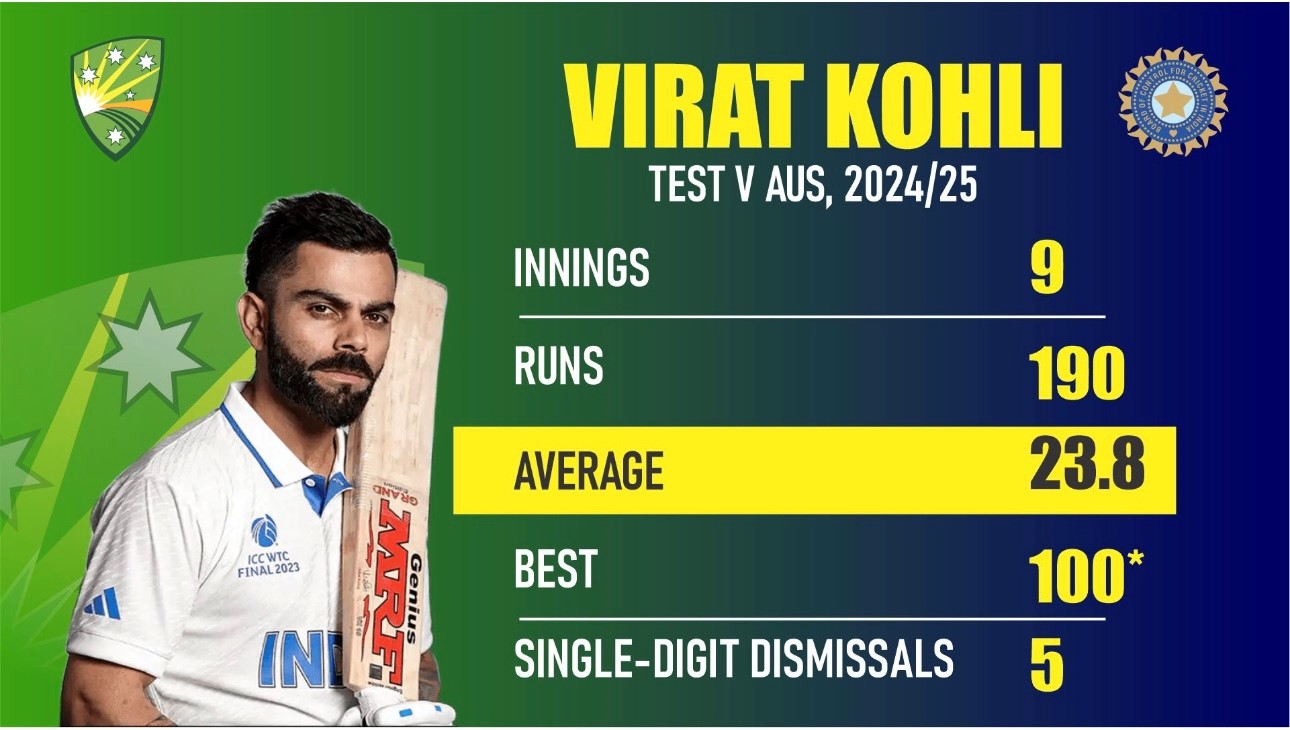
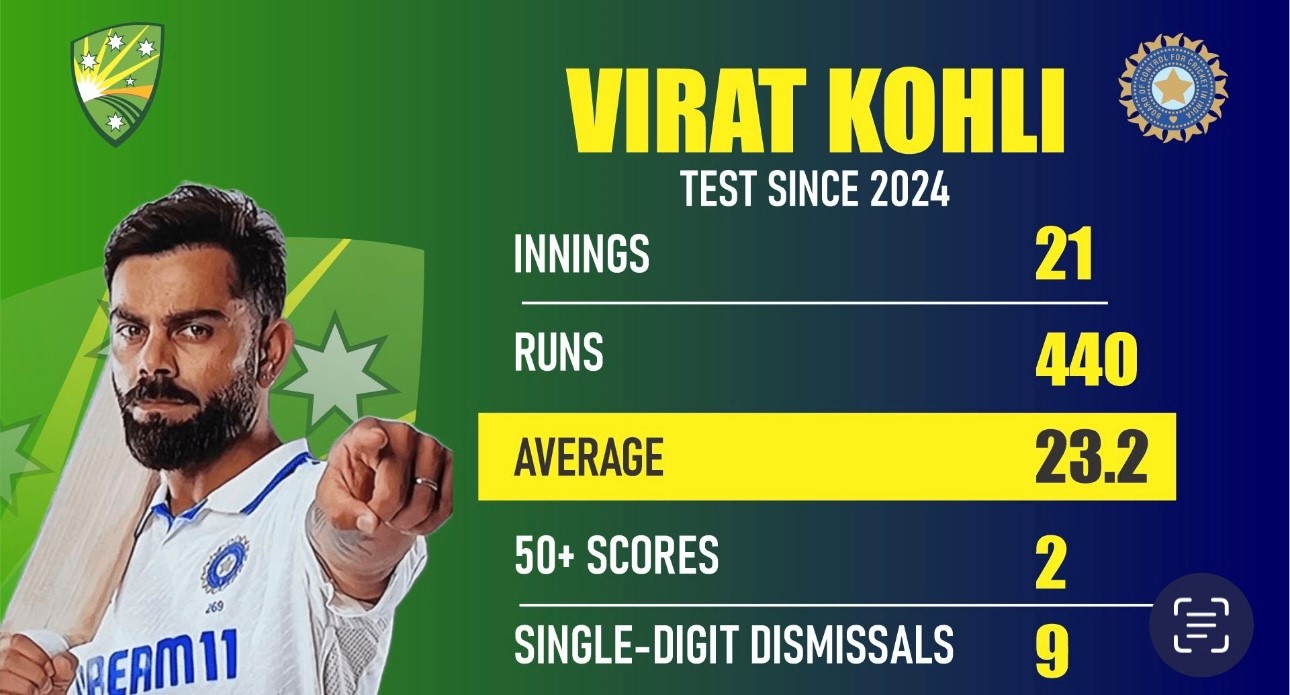
The Weight of Expectation
To speak of Kohli is to invoke the memory of Sachin Tendulkar, the epitome of batsmanship every Indian player aspires to replicate, though it seems an illusion. Kohli’s pursuit of 100 international centuries, a benchmark set by his illustrious predecessor, has been a narrative that has underpinned his career. With 81 hundreds, the dream appears tantalizingly within reach. Yet, dreams, no matter how grand, often falter under the weight of their own expectation.

In Australia, a place that has often brought out the warrior in him, Kohli finds himself entrapped in a cycle of incessant failures. His dismissals have been illustrative not of technical inadequacies but of a mind clouded by self-doubt. The edge to slips or the wicketkeeper has been a recurring motif, an unwelcome refrain in what was once an opus of exalting strokes. Is this the toll of a career spent in ruthless quest of excellence, or the inexorable erosion of an ageing great?
The Spectre of Decline
Kohli’s predicament is not unprecedented. Cricket’s history is strewn with stories of the celebrated players who fell from grace. From the precipitous decline of Ricky Ponting to the tragic unraveling of Brian Lara in his later years, the sport’s unforgiving nature spares no one. Yet Kohli’s case feels particularly poignant. A man whose career was defined by uncompromising consistency now finds himself at the mercy of bowlers he once dominated.
Is this the end of Kohli as we know him? Rohit Sharma, another stalwart, has already shown signs of fading brilliance, his place on the Test team was increasingly questioned and dropped despite being their captain. Ravichandran Ashwin, once India’s talisman with the ball, disillusioned and feeling disrespected, retired midway through the series. It clearly indicated all wasn’t cordial within India’s dressing room. Could Virat Kohli be the next great casualty, a victim not of age or technical decline but of the pounding psychological strain that comes with being a modern cricketing deity?
The Fragility of Legacy
What makes Kohli’s predicament all the more disconcerting is the fragility of legacy in the modern era. Unlike Sachin Tendulkar or a Rahul Dravid, whose careers unrolled in a less intrusive, less vitriolic age, Kohli’s every failure is dissected, magnified, and replayed ad nauseam. His struggles in the Border-Gavaskar Trophy have already spawned countless debates, the cacophony of opinions threatening to drown out the man behind the myth. For Kohli, the way forward is fraught with peril. To persist in the quest of Tendulkar’s record is to risk tarnishing the aura of invincibility that has defined him. To retreat would be to concede, an option unthinkable for a man of his temperament.
Redemption or Ruin?
And yet, if history teaches us anything, it is that greatness often thrives in adversity. Kohli’s career has been a study in defiance, against bowlers, against conditions, against critics. If there is anyone who can script redemption, it is him. But time waits for no man, not even Virat Kohli. The question, then, is not whether Kohli can rediscover his magic. It is whether he can do so before time runs out, before the undertones of decline become a deafening roar. For cricket is as much about timing as it is about talent.
As the Border-Gavaskar Trophy moves towards its denouement, one cannot help but wonder: is this the twilight of Kohli’s career, or the prelude to his greatest comeback? In this moment of uncertainty, cricket fans around the world hold their breath, torn between reverence for the past and trepidation for the future. Whatever the outcome, one thing remains certain, Virat Kohli’s story is far from over. Whether it ends in revitalization or ruin, it will be a story for the ages.
Virat Kohli: The God Reduced to Mortal
In Indian cricket, Virat Kohli has long stood as its blazing star, the inheritor of Sachin Tendulkar’s divine legacy. To millions, he is not just a cricketer; he is a symbol of aspiration, the very pulse of a nation whose emotional rhythms align with his triumphs and tribulations. He has been worshipped, adored, and placed on the loftiest of pedestals. Yet, in the ephemeral realm of fame, where adulation and reproach are separated by the thinnest of margins, Kohli now finds himself a target, no longer the immortal hero but a player all too human, grappling with his fallibility.
From Godhood to Mortality
Virat Kohli’s rise was nothing short of celestial. His cover drives were hymns to perfection, his centuries acts of divinity. Aggression became his creed; confidence, his armor. Where Tendulkar wore humility like a second skin, Kohli reveled in brashness, a gladiator armed with an implacable self-belief. Yet, with every hero’s journey comes a reckoning, and for Kohli, the descent from godhood has been as stark as his rise was meteoric.
The very media that once narrated his exploits with reverence now roils out critiques with merciless fervour. Trolls on social platforms dissect his technique, deride his failures, and question his intent. The man who carried India’s hopes is now burdened by a scrutiny that borders on disdain. For Kohli, the transformation from deity to mortal has been swift and unforgiving.
The Burden of Being Kohli
What does it mean to be Virat Kohli in this moment? To be the man who once silenced critics with centuries now struggling to post scores of substance? To feel the eyes of a billion people weigh heavy on his back every time he takes guard? The media, inexorable in its quest of narratives, has taken to recounting not his triumphs but his failures, magnifying every misstep, every edge, every dismissal.
And yet, for all his flaws, Kohli remains quintessentially himself, aggressive, defiant, unbending. His response to criticism is not meek resignation but a fiery rebuttal, an outward display of the very emotions that roil within him. But aggression, no matter how fierce, cannot plug the technical breaches in his game, nor can it fill the void left by a prolonged absence of runs.
The Glitch in the Machine
There was a time when Kohli’s technique seemed impervious, a flawless oeuvre of balance, precision, and intent. But the cracks in this once-impenetrable method are now all too evident. His feet, hesitant and unsure, no longer move with the certainty they once did. His bat, once an extension of his will, now betrays him with edges that carry to slips and keepers alike. These technical anomalies, magnified under the remorseless eye of modern cricket analysis, have left him exposed. But for Kohli, the greater battle is not against bowlers or conditions; it is against the doubt that creeps into the mind of even the greatest athletes. How does one silence the inner critic when the external world has become a cacophony of dissent?
The Fallibility of Heroes
Kohli’s predicament speaks to a universal truth: heroes are, in the end, human. We exalt them, not because they are infallible, but because they represent our aspirations, our dreams. When they falter, as all must, we are reminded of our vulnerabilities, our mortality. For Kohli, this fall from grace is not just a personal tragedy but a reflection of the fragile nature of heroism itself. The media’s role in this narrative cannot be understated. In its indefatigable quest of headlines, it builds gods only to revel in their downfall. Kohli, once the darling of cricketing reportage, now finds himself at the mercy of a machine that thrives on controversy and schadenfreude. But Kohli is no passive participant in this drama. His aggressive responses to critics, his refusal to concede to public opinion, are both his strength and his vulnerability.
Redemption or Oblivion?
The question that looms over Kohli’s career is not whether he will be criticized—that is inevitable—but whether he can rise above it. Can he find within himself the clarity to address his technical imperfections, the humility to adapt, and the resilience to return to his run-scoring ways? For Kohli, restoration lies not in silencing his critics but in rediscovering his truth. It is in reconnecting with the joy of the game, the purity of purpose that defined his ascension. To do so is no easy task, for cricket is as much a mental battle as it is a physical one.
The Legacy of a Mortal God
Whether Kohli emerges from this phase as the hero of his own redemption or slithers into oblivion. But one thing is certain: his legacy, though tarnished, is far from diminished. For even in his failures, Kohli inspires. He reminds us that greatness is not a state but a journey, one fraught with trials, tribulations, and, yes, failures. In the end, Virat Kohli may no longer be the god after Sachin Ramesh Tendulkar, but he is something far more profound, a man, flawed yet remarkable, striving against the odds. And in that, perhaps, lies the truest form of heroism.
The Rise, Zenith, and Twilight of Virat Kohli: A Philosophical Reflection on Celestial Greatness
In cricket, few have symbolized the spirit of gladiatorial contest and sublime artistry as vividly as Virat Kohli. To his legion of admirers, Kohli ascended beyond the mere mortal sphere, crafting for himself a godlike aura that seemed impervious to the frailties of human existence. Yet, his tale, like that of all greats who straddle the thin line between excellence and immortality, reveals a paradox of inhuman contributions, his successes too divine, his decline too intense, overwhelming.
The Apogee of Inhuman Excellence
Kohli’s rise as India’s finest Test captain and unconditional match-winner was no accident but a tribute to his doctrinaire spirit and technical mastery. His batting stance, a marvel of biomechanical precision combined balance with aggression, which was lost somewhere. With his bat grounded, his backlift promised forceful drives, nonetheless, after 2019, he became more front-on, the shoulder flexing forward and down, which made him vulnerable in the business area, compelled to play every ball. His genius was in an unerring ability to adapt, hand-eye coordination that bordered on clairvoyance, and the alacrity of footwork that turned cricket into art. It seems he has lost it, his grit marginalized, and he appears to have self-doubt fast making him a suspect, an easy wicket for the bowlers.
What he had been, Kohli did not only bat; he orchestrated symphonies of victory. With every flick to midwicket or cover drive that caressed the boundary, he reaffirmed his status as the archetypal hero, one who carried the weight of a billion aspirations. Yet, the apogee of greatness often withstands the seeds of eventual decline.
The Saturation of Celestial Success
The meteoric rise of Kohli’s career mirrored a universal truth: success, when compounded to superhuman levels, becomes a burden too onerous to sustain. From 2016 to 2019, he was a colossus bestriding the cricketing world, averaging fifty or more across formats with an almost disconcerting regularity. But such heights, while awe-inspiring, impose their own tyranny. The fall from celestial status is rarely sudden. Kohli’s downward trajectory since 2021, a descent into prolonged stretches of inconsistency, reflects not just technical frailties but the extreme psychological toll exacted by perfection. The pressure to retain his godlike aura led to overthinking, tinkering with a technique once impervious to scrutiny. His once-unassailable off-stump awareness became porous; the expansive cover drives and high backlift betrayed a subtle imbalance, leaving him vulnerable to the moving ball.
The Human Cost of Celestial Expectation
To understand Kohli’s struggles is to understand the inhuman demands placed on modern cricketers. Unlike their predecessors, they exist in a ceaseless spotlight, scrutinised not just for their craft but for their every gesture, tweet, and glance. The weight of expectations triggers a cascade of psychological and neurological responses. The dopamine rush of success diminishes over time, making once-cherished victories feel routine. In this state, even the extraordinary can falter.
The decline of great cricketers is not just technical but deeply human. Hand-eye coordination, the gift that once set them apart, begins to waver. The neural pathways that once allowed them to read a bowler’s hand falter under the duress of repetitive strain and mental fatigue. The quickness of the feet, so essential to mastering swing and spin, slows imperceptibly but significantly. And as performance dips, criticism, sharp, relentless, and unforgiving, descends.
The Philosophical Quandary of Greatness
Kohli’s plight mirrors that of many illustrious predecessors, Sir Donald Bradman in his final innings, Sachin Tendulkar in his twilight years, or Ricky Ponting in his post-prime times. Each faced the inexorable truth: that greatness is as much a prison as it is liberation. It is the paradox of being both venerated and vilified, of being lauded for past triumphs yet judged mercilessly for present failings.
How does a great cricketer reconcile with this dyad? For Kohli, the answer lies not only in rediscovering form but in accepting the transient nature of greatness itself. Cricket, is a game of unpredictability. In his moments of vulnerability, Kohli’s humanity emerges most vividly, reminding us that even gods of the game are, at their core, human beings.
The Eternal Arc of Greatness
The arc of Kohli’s career, from his rise to his struggles, is a microcosm of the human condition. It speaks to the universality of striving, achieving, and ultimately confronting decline. Yet, in this decline, there lies the potential for a different kind of immortality, a legacy that outdoes statistics and flows into the realm of myth.
Virat Kohli’s tale is far from over. In the history of cricket, he will remain not just as a match-winner or captain but as a symbol of the beauty and burden of greatness, a man whose life on the pitch mirrors triumph and tragedy that defines human existence.
The Swan Song of Greatness: On the Graceful Exit of Legends
There comes a time in the life of every great cricketer when the once-unassailable fortress of skill begins to show fissures, when the weight of expectations grows heavier than the runs scored, and when the rhythm of their feet no longer keeps pace with the metronome of their genius. For Virat Kohli, an unrivaled legend of modern cricket, the question looms: is it time to retire from Tests, to leave on his terms before the cricketing junta and selectors conspire to write his end?
The Tragedy of Unfinished Symphonies
Cricket is often unforgiving. It often affords its heroes neither the time nor the stage to sculpt their own exits. Legends such as Ricky Ponting, who prolonged their careers beyond their prime, or the great Sachin Tendulkar, whose retirement came after the prolonged clamor for his departure, remind us of this cruel reality. More painfully, there are tales of disdainful endings, like those of Rohit Sharma or Ravichandran Ashwin, quietly sidelined or retired without the grandeur their stature merited.
For Kohli, whose career has been a portrayal of strokes and indomitable spirit, the fear of an unceremonious exit is as pressing as the weight of his legacy. His current struggles, marked by diminishing returns and technical frailties, beg the question: should he take charge of his destiny and leave gracefully, or risk being relegated to the wilderness?
The Psychological Toll of Greatness
The decline of a cricketer, particularly one of Kohli’s stature, is as much a psychological battle as a technical one. For years, Kohli symbolized perfection, his technique a blend of precision and aggression, his mental fortitude unparalleled. Yet, greatness exacts a toll. The unrelenting spotlight, the pressure to meet insatiable expectations, and the perpetual need to justify one’s celestial status weigh heavily on even the most resolute minds. Neurotransmitters, once the allies of quickness and coordination, falter under the strain of repetition and fatigue. The dopamine surge of a century loses its edge; the serotonin-driven calm that steadied his nerves begins to waver. Loss of form, once an anomaly, becomes a recurring theme, and with it comes the vituperation of criticism. The crowd, once adoring, turns sceptical; the selectors, once loyal, grow impatient.
The Need for Graceful Departures
In this unforgiving cycle, the cricketing world has often failed its legends. The indignity of being dropped, sidelined, or left in the backwoods tarnishes the legacy of even the greatest. For Kohli, and indeed for all who have served the game with distinction, a graceful exit is not only a courtesy but a moral imperative. Contrast this with the tales of cricketers who chose their moment of departure with wisdom. Sir Donald Bradman retired with the world at his feet, his final innings a poignant reminder of the human frailty beneath his godlike aura. Jacques Kallis and Kumar Sangakkara, too, orchestrated exits that preserved their dignity and legacy. These cricketers understood that to leave at the height of one’s powers, or at least with one’s head held high, is to immortalize oneself in the annals of the game.
Kohli’s Dilemma
For Kohli, times ahead are fraught with challenges. His enduring presence in Indian cricket, while inspiring, risks overshadowing the emergence of younger talent. His technical adjustments, once a hallmark of his adaptability, now seem insufficient to arrest the slide. His mind, once a fortress of self-belief, must now grapple with the spectre of doubt. Yet, Kohli has always been a master of reinvention. The question is not whether he can summon another resurgence but whether he should. By retiring from Test cricket on his terms, Kohli can script an ending befitting his stature, sparing himself the ignominy of being dropped or quietly sidelined.
The Universality of Decline
Kohli’s plight mirrors that of countless legends across generations and sports. From Brian Lara to Steve Waugh, from Tendulkar to Ponting, the story remains the same: the untiring quest of excellence, the inevitable decline, and the cruel judgment of a world that demands perpetual greatness. This is the paradox of sporting immortality. The very skills that elevate a cricketer to divine status are those that, with time, betray them. Hand-eye coordination falters, reflexes slow, and the neural pathways that once anticipated every bowler’s move become sluggish. The decline is not merely physical but existential, a reminder that even idols must surrender to time.
The Legacy of a Graceful Exit
Kohli’s legacy, already secure, will be defined not just by his achievements but by the manner of his departure. A graceful exit, marked by gratitude and dignity, would serve as a fitting coda to a career of extraordinary contributions. It would also set a precedent for future legends, emphasizing the importance of controlling one’s narrative rather than succumbing to the whims of selectors or public opinion.
As Kohli stands at the crossroads, his decision will go beyond the realm of cricket. It will become a philosophical statement on the nature of greatness, the inevitability of decline, and the unending dignity of choosing one’s end. In leaving Test cricket on his terms, Kohli would remind us all that true immortality lies not in prolonging the inevitable but in departing as a symbol of grace, resilience, and unchallenged brilliance.
Dr. Nauman Niaz is a civil award winner (Tamagha-i-Imtiaz) in Sports Broadcasting and Journalism and a regular cricket correspondent, having covered 54 tours and three ICC World Cups. He has written over 3500 articles, authored 14 books, and is the official historian of Pakistan cricket (Fluctuating Fortunes IV Volumes – 2005). His signature show, Game On Hai, has received the highest ratings and acclaim.








